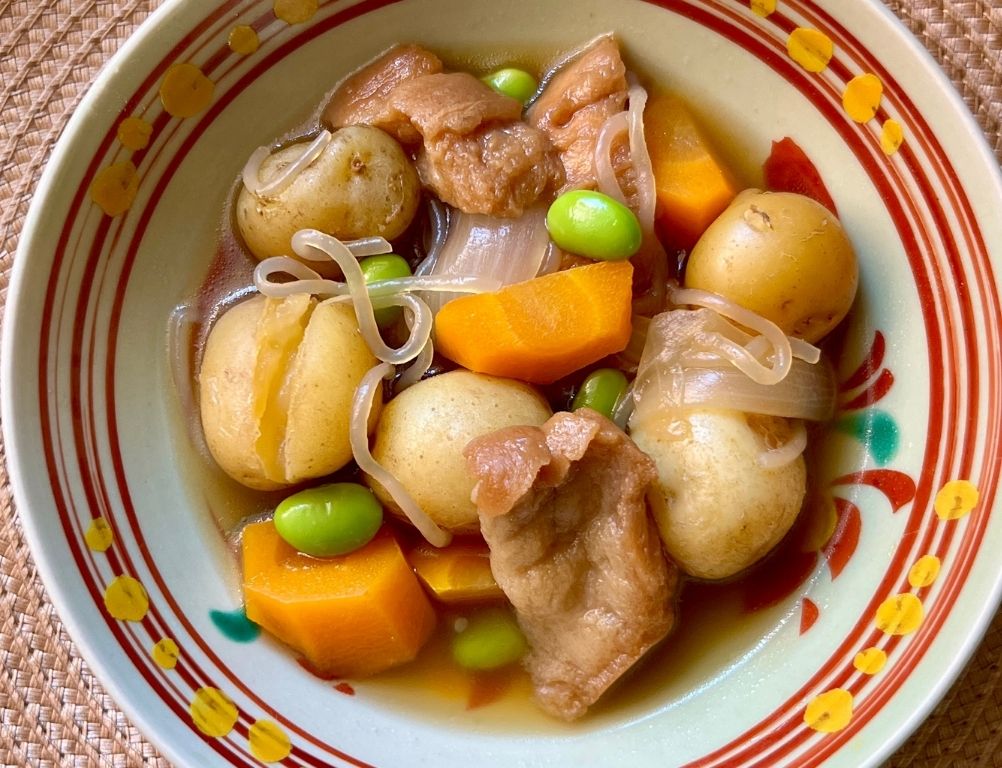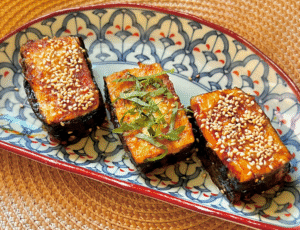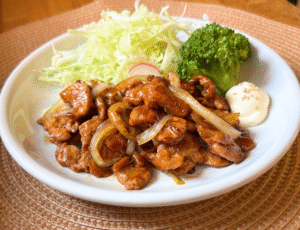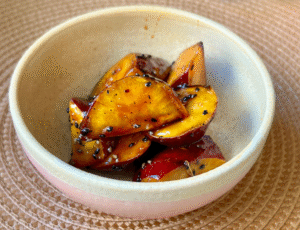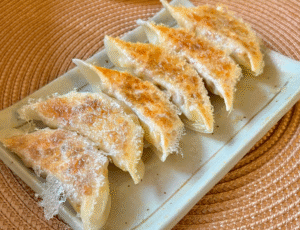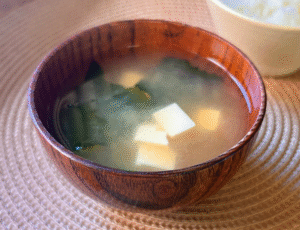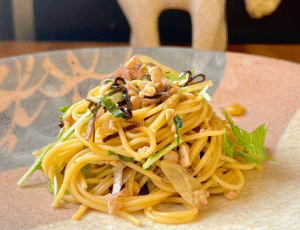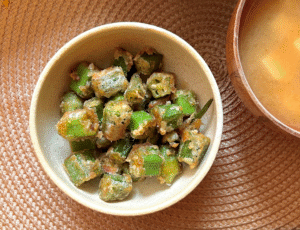Nikujaga is a classic Japanese comfort food made with potatoes, onions, and vegetables simmered in a savory soy sauce–based broth.
Traditionally, it includes thinly sliced beef, but this vegan version uses fu (wheat gluten), a traditional Japanese ingredient often used in Buddhist temple cuisine as a high-protein, meat-free alternative.
The wheat gluten absorbs the sweet and savory broth beautifully, creating a hearty and satisfying stew that’s 100% plant-based. Enjoy it with rice for the perfect home-style meal.
Table Of Contents
Ingredients (Serves 2–3)
- 2 potatoes (about 250g, cut into bite-sized pieces)
- 1/2 onion (sliced into wedges, optional)
- 1/2 carrot (cut into chunks)
- Wheat gluten (fu), rehydrated
- 100g shirataki noodles (parboiled, cut into shorter lengths)
- Edamame (for garnish)
- 2 tsp vegetable oil
For the broth
- 250ml kombu dashi (kelp stock)
- 1.5 tbsp soy sauce
- 1 tbsp mirin
- 2 tsp sugar (adjust to taste)
Instructions
- Heat vegetable oil in a pot and lightly sauté the potatoes, onion, and carrot.
(In the video version, I skipped sautéing and simmered everything directly due to time.) - Add the rehydrated wheat gluten and parboiled shirataki noodles. Stir gently to combine.
- Pour in the broth (kombu dashi, soy sauce, mirin, sugar). Simmer over medium heat for 10–15 minutes.
- Once the vegetables are tender and the broth is absorbed, turn off the heat.
- Serve in a bowl and garnish with edamame.
VIDEO: Watch How to Make It
https://www.instagram.com/p/DNg1o3zSsqI
Point
- Preparing the wheat gluten (fu)
Soak the dried wheat gluten in water until soft, then gently squeeze out the excess water. This helps it absorb the broth better and gives it a meat-like texture. - Shirataki noodles
Parboil the shirataki to remove any odor. For extra flavor, you can dry-fry them briefly before simmering so they soak up the broth more easily. - Cutting the vegetables
Cut the potatoes and carrots into similar-sized pieces to ensure even cooking and prevent them from falling apart. Slice the onion into wedges to bring out its natural sweetness. - Simmering technique
Place a drop-lid (otoshibuta) or even a piece of parchment paper or foil—directly on the ingredients while simmering. This allows the broth to circulate evenly and helps the flavors soak in faster. - Letting flavors develop
It’s delicious right after cooking, but if you let it cool once and then reheat, the flavors penetrate the vegetables and wheat gluten even more. - Edamame garnish
Edamame adds not only a pop of bright green color but also extra protein. Add them at the end to keep their freshness and color.

